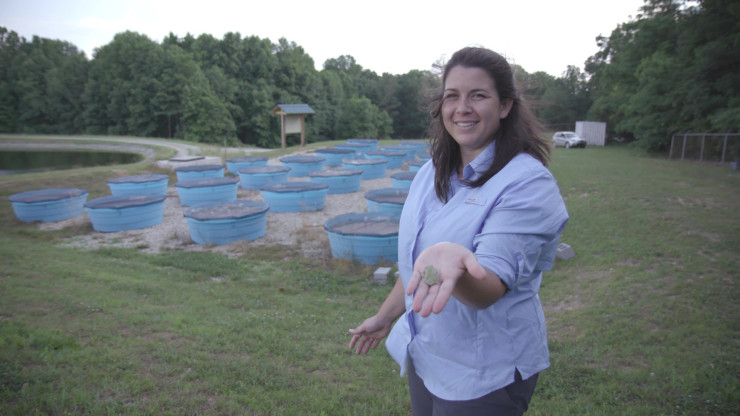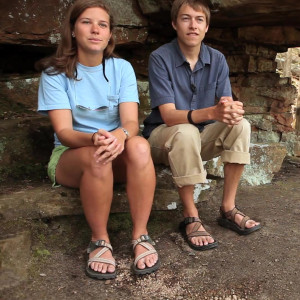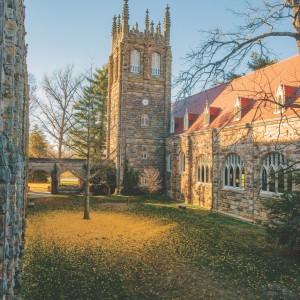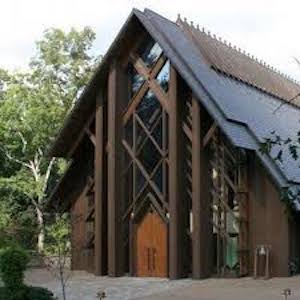Do·main (dō-meyn') noun. 1) A wooded laboratory filled with diverse ecosystems; useful for research, a tool for answering real-world questions. 2) A recreational oasis; an outdoor playground naturally equipped with trails to hike, rocks to climb, etc. 3) Your new home.
The University's Domain bears a plentiful harvest. That’s not a marketing claim. It’s just a matter of ...
Fact
Sewanee's Integrated Program in the Environment is one of the premier collections of environmental offerings in the country. A working farm, a 13,000-acre forest, and well-funded internships offer opportunities to apply your classroom learning.
The Domain is home to an extensive trail network. The signature Perimeter Trail—the 19-mile loop that circles much of the Domain—is a must for your Sewanee bucket list. It provides a hiking experience unparalleled in the region. Try one of our favorites.
The University Farm supplies McClurg Dining Hall, Stirling’s Coffee House, and the Cup & Gown Cafe with over one ton of product annually, including fresh eggs, salad greens, and other produce. Want to get your hands dirty? Labs, research, independent study, and social events are just a few ways to get down on the farm.

A Living Learning Laboratory
"If you're a student who is interested in being outside and studying the natural world and being able to do that at any time, Sewanee is the place for you."
Professor Kristen Cecala is interested in how environmental change alters the ecology and distribution of amphibians and reptiles through behavioral mechanisms.
Learn from award-winning professors
In his book The Forest Unseen, Biology Professor David Haskell uses a one-square-meter patch of Sewanee's old-growth forest as a window onto the entire natural world. His writing brings the forest and its inhabitants to vivid life. Read an excerpt below.
A polar wind rips across the mountainside, streaming through my scarf, pushing an ache into my jaw. Not counting the wind chill, it is twenty degrees below freezing. In these southern forests such cold is unusual. Typical southern winters cycle between thaws and mild freezes, with deep chills arriving for a few days each year. Today’s cold will take the forest’s life to its physiological limits.
I want to experience the cold as the forest’s animals do, without the protection of clothes. On a whim, I throw my gloves and hat onto the frozen ground. The scarf follows. Quickly, I strip off my insulated overalls, shirt, T-shirt, and trousers.
The first two seconds of the experiment are surprisingly refreshing, a pleasant coolness after the stuffy clothes. Then the wind blasts away the illusion and my head is fogged with pain. The heat streaming out of my body scorches my skin.
A chorus of Carolina chickadees provides the accompaniment to this absurd striptease. The birds dance through the trees like sparks from a fire, careening through twigs. They rest no more than a second on any surface, then shoot away. The contrast on this cold day between the chickadees’ liveliness and my physiological incompetence seems to defy nature’s rules. Small animals should be less able to cope with the cold than their larger cousins. Small animals cool rapidly because they have proportionally much more body surface than body volume.
The relationship between the size of animals and the rate of heat loss has produced geographic trends in body sizes. When an animal species exists over a large area, the individuals in the north are usually larger than those in the south. This is known as Bergmann’s rule, after the nineteenth-century anatomist who first described the relationship. Carolina chickadees in Tennessee live towards the northern end of the species’ range, and they are ten to twenty percent larger than individuals from the southern limit of the range in Florida. Tennessee birds have tipped the balance between surface area and body volume to match the colder winters here. Farther north, Carolina chickadees are replaced by a closely related species, the black-capped chickadee, which is ten percent larger again.
Bergmann’s rule seems remote as I stand naked in the forest. The wind gusts hard and the burning sensation in my skin surges. Then, a deeper pain starts. Something behind my conscious mind is trapped and alarmed. My body is failing after just a minute in this winter chill. Yet, I weigh ten thousand times more than a chickadee; surely these birds should be extinguished in seconds.
This piece was adapted with permission from The Forest Unseen: A Year’s Watch in Nature, published by Viking, an imprint of Penguin Publishing Group, a division of Penguin Random House, LLC. Copyright © 2012 by David George Haskell.




